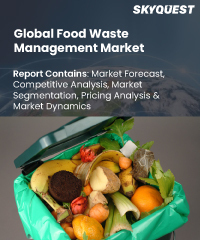
Report ID: SQMIG20L2016

Report ID:
SQMIG20L2016 |
Region:
Global |
Published Date: November, 2024
Pages:
221
|
Tables:
126 |
Figures:
77
North America dominated the market, accounting for 35.9% of total revenue in 2022. Damage to food products, overproduction, a lack of cold-chain infrastructure, strict food-grading specifications, standardized date labelling practices, and varying customer demand are all factors that contribute to food waste management in North America.
The EU member states are attempting to reduce food waste at the source while also making investments in proper disposal methods in order to obtain beneficial goods such as fertilizer and biogas from the processes. For instance, the EU has pledged to meet SDG Target 12.3 of halving per percentage of population global food waste at the consumer and retail levels by 2030. Furthermore, strict food waste disposal regulations are expected to drive the regional market over the forecast period.
Over the forecast period, the Asia Pacific region is expected to grow at a CAGR of 5.9%. The industry of food and beverages in Asia Pacific is a major contributor to the region's economic development. Food trade is expected to grow significantly, with rising amounts of regional and national specialization. With a rising population and increasing income, the food sector is expected to expand rapidly during the forecast period, making a contribution to market growth.
Because of a lack of concern about food losses, developed economies in the Middle East and Africa, such as Qatar, contribute significantly to global food waste. Furthermore, the lack of an adequate number of cold storage and warehouses, as well as transportation facilities, are the primary cause the generation of food waste in the region.
Our industry expert will work with you to provide you with customized data in a short amount of time.
REQUEST FREE CUSTOMIZATIONWant to customize this report? This report can be personalized according to your needs. Our analysts and industry experts will work directly with you to understand your requirements and provide you with customized data in a short amount of time. We offer $1000 worth of FREE customization at the time of purchase.

Report ID: SQMIG20L2016